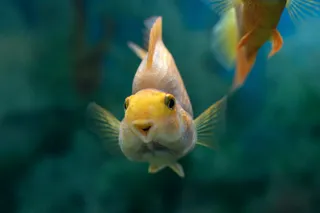Oh, to be a pitcher plant. Unlike most of the animal kingdom, who run around chasing money, antelopes, Twitter mentions and whatnot, pitcher plants just sit there and let it all come to them.
It's like being inside one of those money booth things with dollar bills flying around and just letting them stick to your face. It's not a lifestyle for everyone, of course, but if these guys can make it work, there's hope for the rest of us. I mean, they live on a freaking mountain for Chrissakes.
Nepenthes attenboroughii is one of the largest pitcher plant species in the world. The characteristic bells it uses to both trap and digest interlopers have been found to measure up to 1.5 liters in volume, and the plant's stem can reach heights of one and a half meters (or about five feet).
They're so big, in fact, that when they ...














